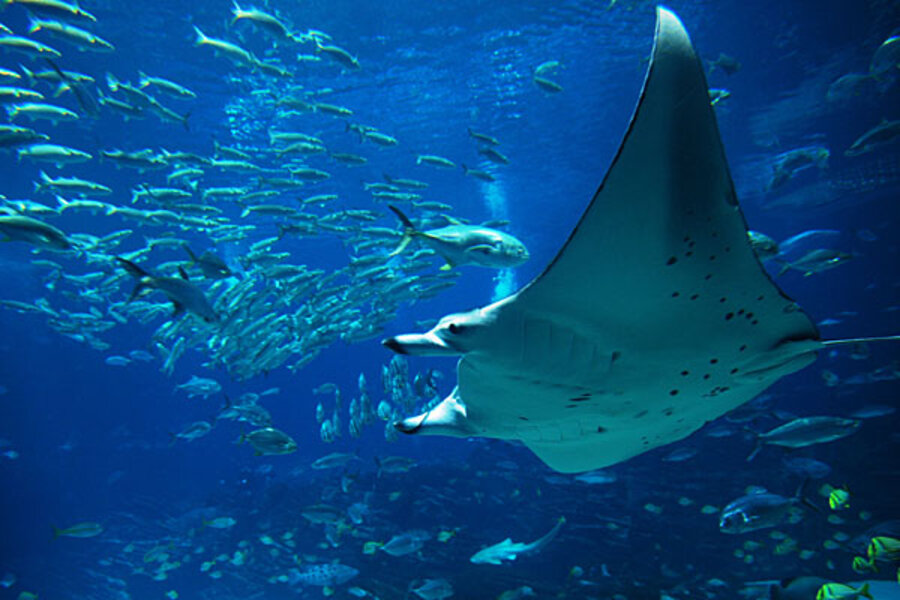Giant manta rays are restless travelers, says satellite study
Loading...
Very little is known about giant manta rays, fish up to 25 feet wide that glide through the ocean like giant underwater bats. Now, in the first study using satellite tracking of the creatures, scientists have teased out a few secrets, including that the beasts travel a lot.
The new study tracked six manta rays — four females, one male and a juvenile (undetermined sex) — for 13 days off Mexico's Yucatan Peninsula.
"The satellite tag data revealed that some of the rays traveled more than 1,100 kilometers [621 miles] during the study period," study team member Matthew Witt, of the University of Exeter's Environment and Sustainability Institute, said in a statement. "The rays spent most of their time traversing coastal areas plentiful in zooplankton and fish eggs from spawning events."
IN PICTURES: 20 weirdest fish in the sea
Like baleen whales and whale sharks, manta rays (Manta birostris) are filter feeders that swim through the water with mouths agape collecting huge gulps of plankton-filled water; they use small finterlike structures called gill rakers in their mouths to filter out the teensy zooplankton.
The research team also found the rays, closely related to sharks, spent nearly all their time within 200 miles of the coast. [Photos: Mysterious Whale Sharks]
"Studies such as this one are critical in developing effective management of manta rays, which appear to be declining worldwide," said Howard Rosenbaum, director of the Wildlife Conservation Society's Ocean Giant Program.
Manta rays are listed as vulnerable by the International Union for Conservation of Nature. They're sometimes captured as a byproduct of using fishing nets. They are captured for shark bait and are in demand for their gill rakers, which are used in traditional Chinese medicinal trade.
The majority of ray locations revealed by the satellite tracking were in major shipping routes in the region, with only 11.5 percent of the locations residing in marine protected areas. As such manta rays could be vulnerable to ship strikes, the researchers suggested.
Sometimes called "devilfish," manta rays are harmless to humans. They lack the stinger of the better-known stingray. Manta rays have the highest brain-to-body ratio of sharks, rays and skates. They give birth to live young, usually one or two "pups" every one or two years.
"While the broader migratory movements of manta rays are still not known, it is clear that satellite tracking technology has the potential to offer great inroads into understanding movements and contextualising spatially explicit threats to this species," the researchers write this week in the online journal PLoS ONE.
IN PICTURES: 20 weirdest fish in the sea
LiveScience for the latest in science news and discoveries on Twitter @livescience and on Facebook.
- Marine Marvels: Spectacular Photos of Sea Creatures
- In Photos: Spooky Deep-Sea Creatures
- In Photos: Top 10 Deadliest Animals
Copyright 2012 LiveScience, a TechMediaNetwork company. All rights reserved. This material may not be published, broadcast, rewritten or redistributed.







